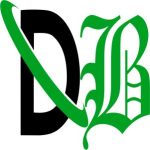Loan approval or mortgage approval relies on a lot of steps. A bank statement is a statement that users receive from the bank after each month. This contains all the transactions performed in a single month. Bank statements contain details like available bank balance, deposits made, withdrawals, interest, service charges, penalties, and multiple other details.
Customers can access the banking history of any month of any period. There are various methods a customer can use to get bank account statements. They can get the details by either going to the bank manually or using digital banking. Digital banking usually consists of two option such as a website or mobile banking. Most loan lenders ask for customer’s 3-6 months old bank statements for verification. Banks need to confirm where applicants have invested their money and how much money they have invested recently.
Bank Statement Verification for Loan Approval
Verifying bank account statements for loan approval is a process that has been used by banks for a long time to verify if a customer is suitable to get a loan or not. Getting a loan approval from a bank in today’s time is an extremely tough task. The loan verification process varies from bank to bank and the process starts with the application. An applicant can complete an application online or by visiting the nearest branch. Applicants have to attach a series of documents with the loan application. Some of the most common documents are address proof, identity proof, income proof, bank statements, and other documents.
Before the banks approve any loans, they will thoroughly verify documents to ensure four factors of a person’s financial health. The four factors are safety, liquidity, spread, and profitability. Banks will then study the past flow of funds from the bank statement for a certain period. This is to make sure that the customer has enough cash flow to pay back the loan. Banks can ask to keep property papers or jewelry as security, and can use these collateral if the customer isn’t capable to pay the loan.
It is crucial for banks and financial institutions to analyze and verifying bank account statements, this assists them in making sure if the documents aren’t fake. A lot of fraudsters try to trick banks by giving them a loan using fake address proof, fake identity documents, and fake bank statements. Loan lenders analyze the verification of address, employment, and other details on the bank statements to make sure a customer is who they claim they are.
The Need for Bank Account Statement Verification
Those who want a mortgage or any kind of loan need to get verified by the bank. Banks need to verify the details of customers before approving the loan. Banks also require verification of deposit (POD/VOD) form. This form is later sent to the borrower’s bank account to complete the loan application process.
Mortgage lenders require financial information from potential borrowers while deciding whether to extend credit or not. Mortgage lenders use a POD to verify if there are sufficient funds in the account to make the downpayment and closing costs for a property.
The need for bank account statement verification for loan approval is growing as digital banking fraud is growing exponentially. Fraudsters employ technology for building fake bank account statements, address proof, identity documents, and other documents to make sure they can trick banks to get a loan using someone else’s identity.
Financial Information That Is Verified In Bank Statements
A lender that submits a VOD form to a bank receives confirmation of the loan applicant’s financial information. Requirement for details verification can vary from bank to bank, some of the most common information required for verification is:
- Account number
- Account type, such as checking, saving, individual retirement account, or certificate of deposit.
- Open or closed status an open date.
- Account holder names, who are the authorized signers on the account.
- Balance information, including current balance as well as average balance history over 3 statement periods.
- Current interest rate (if applies) as well as interest paid over the last 3 recent bank account statements.
- Account closed date and the balance at the closing time.
- If it’s a savings or a certificate of deposit, the bank may ask for details like interest rate, interest paid, and early withdrawal penalties.
A loan lender has all the rights to refuse a loan or mortgage to a user based on the details or their current or past financial health.
Final Take: Bank Statement Verification
In performing the verification process, some lenders may dismiss rare account overdrafts. A consumer is a red flag for instance they have a lot of overdrafts within the two-three month period before closing on a mortgage.
Also, banking institutions may want to see proof of several months of cash in hand or cash in another account so they can make sure the borrowers can pay back the money. Bank account statement verification can happen using manual methods, which requires an abundance of human resources, sophisticatedly made fake bank account statements can be tough to verify by humans and can lead to huge losses.
Technologies like DIRO’s online document verification can verify bank account statements instantly and check if they have been tampered with. It captures information and verifies it against original information to verify data, verified information is then placed on the blockchain to make it immutable and easy to access.

